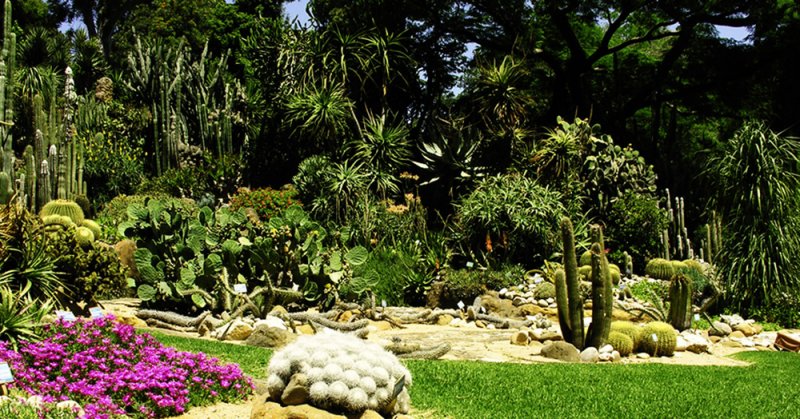Among its attractions, Naples counts as one of the most beautiful botanical gardens in all of Italy. The botanical garden of Naples, also known as the Royal Botanical Garden, due to its royal origin, hosts specimens of species now extinct in nature or the wild ancestors of many of the current fruit plants that are indispensable for dealing with any climate change.
Today the botanical garden of Naples is a structure of the University of Naples "Federico II". But let's discover together something more of this beautiful place.

The history of the botanical garden of Naples
The botanical garden was built in the area owned by some religious groups and was built in 1807 on commission by Giuseppe Bonaparte. The entire plant is the work of several architects: Giuliano de Fazio and Gaspare Maria Paoletti, who took care of the upper and lower parts of the garden respectively.
The garden officially opened to the city in 1811 focusing mainly on the cultivation of many species of medical and exotic interest. Subsequently, various species were implemented which reached almost 9000 units in 1860. The structure consists of two levels, several heated greenhouses (called hot stoves), several well-sectored areas and the castle, which dates back to the 16th century.
The following year the botanical museum was established. In 1906, after a major period of decline, the garden underwent a significant restoration of some structures and the collection of plant species was increased. This rearrangement led to the establishment of the experimental station for medicinal plants and started the construction of a structure destined to become the new headquarters of the Institute.
During the Second World War, there were major changes and alterations to the garden. Many structures were destroyed by bombing and the iron was stolen for military purposes. Many portions of the garden were used to cultivate necessities and also a part was adapted into a football field to host the Napoli matches. From the second post-war period, in particular 1967, the garden achieved economic and administrative autonomy, which brought improvements to the entire complex such as new greenhouses, a heating system and a water distribution network. In 1980, following the earthquake, the garden was rearranged further, reaching the current conformation
The shape of the botanical garden
The Botanical Garden of Naples is divided according to different thematic gardens that create paths that intersect with each other: the systematic, ecological and ethnobotanical one. From desert plants to poisonous ones or those mentioned in the Bible there are many sectors and experimental fields between which a garden entirely dedicated to the blind.
The architecture of the garden also deserves special mention. The tempered greenhouse is a building with a long facade made up of fluted Doric semi-columns that frame arched openings filled with large windows. Entering from Via Foria we immediately find the building of the Federico II Plant Biology Department.
The 16th-century castle is located in the area that borders the Real Albergo dei Poveri. Its name derives from the circular towers that make up its facade. In the castle, there is the Museum of Ethno-botanical and Paleo-botany which collects the groups of plants that saw their origin at the dawn of the Earth.
The botanical garden is immersed in the Neapolitan city area and it almost seems like a daydream when you find yourself in front of an expanse of greenery in the middle of the city. The botanical garden of Naples is one of the largest and richest in Italy and is a place to visit absolutely a stone's throw from the historic centre. In fact, the botanical garden is located near Piazza Carlo III at the beginning of Via Foria, a few steps from the Archaeological Museum of Naples.
If you are attracted by nature and history, the botanical garden area is truly intriguing for a stay in Naples. If you are interested in experiencing this piece of the city, I cannot help but recommend the bed and breakfast LH51, a beautiful place to spend your time in the city.
What are you waiting for? The beauty of Naples and its hidden places are waiting for you.
About the author
Written on 22/07/2021




Mario Galterisi
The botanical garden of Naples is one of the most beautiful and envied structures in the city. It has a large extension and a strong historical presence. It preserves about 9000 plant species and almost 25000 specimens. Let's discover its beauties together.